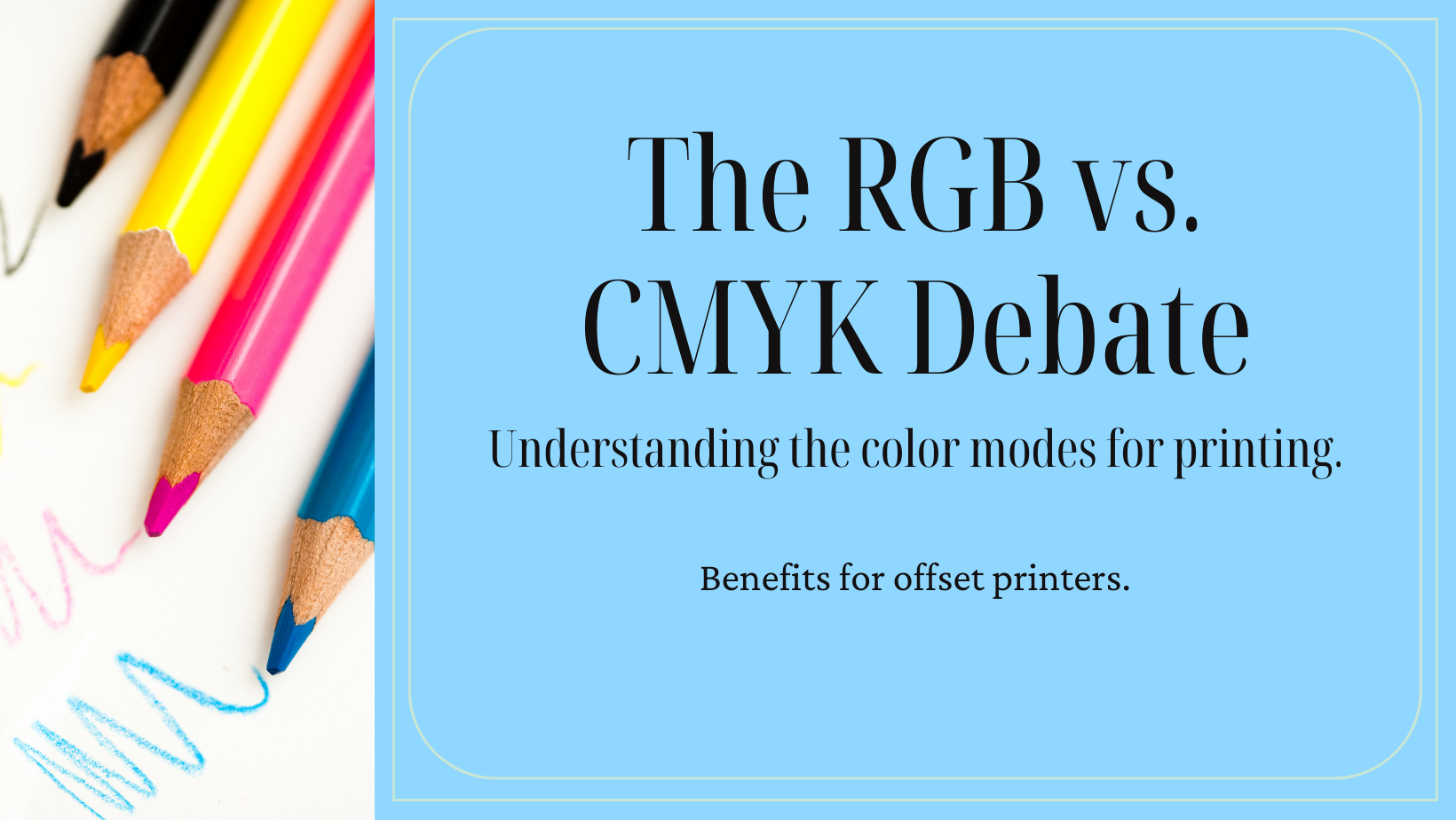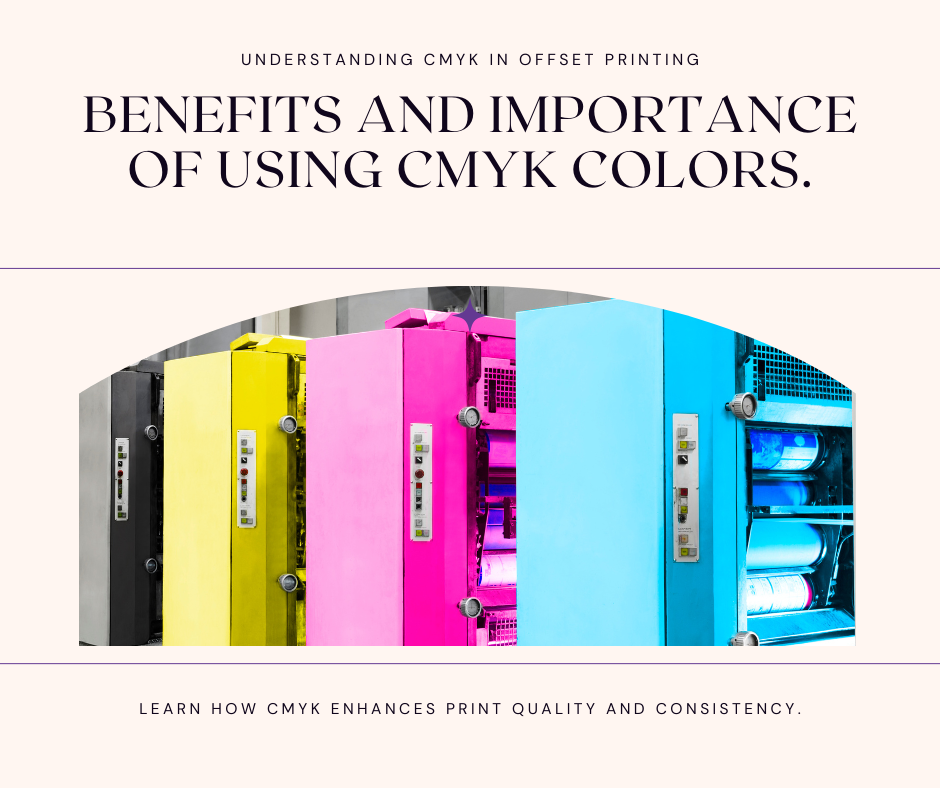Unraveling the Mystery of RGB and CMYK || Why Offset Printers Swear by CMYK

In the colorful realm of design and printing, two terms reign supreme: RGB and CMYK. While they may seem like just a jumble of letters, understanding their significance is crucial, especially for those venturing into the world of offset printing. So, let's embark on a journey to demystify RGB and CMYK and uncover why offset printers swear by the latter.
Understanding RGB and CMYK:
RGB is essentially an additive color model that uses these primary colors with light to make the colors brighter. CMYK represents cyan, magenta, yellow and key, which means black. CMYK is a subtractive color model taken from natural white light to produce different color pigments or dyes.

RGB and CMYK are color models used to represent colors in digital and print media, respectively. RGB stands for Red, Green, and Blue, and it's primarily used for digital displays such as computer monitors, TVs, and smartphones. In the RGB model, colors are created by blending different intensities of red, green, and blue light.
On the other hand, CMYK stands for Cyan, Magenta, Yellow, and Key (Black), and it's the standard color model used in offset printing. In the CMYK model, colors are created by overlaying semi-transparent ink layers on a white substrate, such as paper. By varying the percentages of cyan, magenta, yellow, and black inks, a wide range of colors can be achieved in print.
Benefits of CMYK in Offset Printing:

-
Color Accuracy: CMYK offers excellent color accuracy when reproducing designs in print. Offset printers rely on precise color control to ensure that the final printed product matches the designer's vision. With CMYK, printers can achieve consistent and predictable results, making it the preferred choice for high-quality printing projects.
-
Color Reproduction: CMYK excels in reproducing a vast spectrum of colors, making it ideal for printing photographs, illustrations, and intricate designs. Offset printers can accurately replicate the subtle nuances of color gradients and textures, resulting in vibrant and lifelike prints.
-
Cost-Effectiveness: Offset printing is known for its cost-effectiveness, especially for large-volume print runs. By using CMYK inks, printers can achieve a wide range of colors using only four primary inks, reducing the production costs associated with custom ink mixing or spot color printing.
-
Consistency and Reliability: Offset printers value consistency and reliability in their printing process. CMYK inks are standardized and widely available, ensuring consistent color reproduction across different print runs and printing presses. This reliability is crucial for maintaining brand identity and consistency in marketing materials and packaging.
-
Compatibility with Offset Printing Process: Offset printing relies on a series of rollers and plates to transfer ink onto the printing substrate. CMYK inks are specifically formulated for this printing process, ensuring optimal ink adhesion, drying time, and print quality. By using CMYK inks, offset printers can achieve sharp, detailed prints with minimal ink smudging or bleeding.
In conclusion, CMYK is the backbone of offset printing, offering unparalleled color accuracy, reproduction quality, cost-effectiveness, and reliability. While RGB may reign supreme in the digital realm, CMYK remains the go-to choice for producing high-quality printed materials. So, the next time you marvel at a beautifully printed brochure or magazine, remember, that it's the magic of CMYK at work, bringing colors to life on the printed page.
- Plastic Packaging (3)
- Printing Methods (12)
- Paper Packaging (32)
- General (35)
- New Packaging Desings (Instagram) (3)